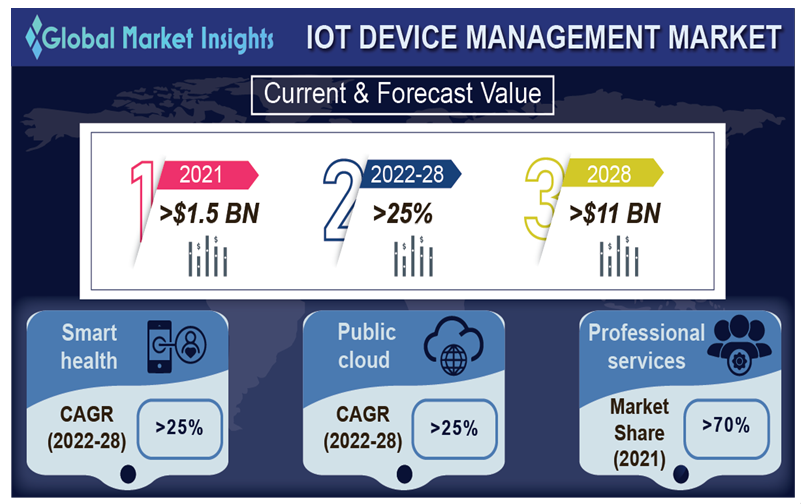As per the report by Global Market Insights, Inc. “Worldwide IoT Device Management market was valued USD 1.5 billion in 2021 and will surpass a revenue collection of USD 11 billion by 2032 with an annual growth rate of 25% over 2022 to 2028.”
The Internet of Things (IoT) is accentuating both the benefits of technological dominance and the perils of cross-border interconnection.
China is currently a major player in designing IoT devices, which is facilitated by the expanding technical presence of Chinese companies.
For instance, in December 2021, Amazon Web Services, Inc. (AWS), a subsidiary of tech leader Amazon providing on-demand cloud computing, announced the extension of its strategic partnership with social media giant Meta.
AWS and Meta intended to collaborate to improve the performance of PyTorch on AWS and to speed up the development, training, deployment, and operation of artificial intelligence (AI)/machine learning (ML) models.
For extensive analysis, the IoT device management market has been classified in terms of component, deployment model, application, and region.
Based on component, the industry has been classified into solutions and services. Under solution, the market has been divided into security management, data management, real time streaming analytics, remote monitoring management, and others.

The security management segment gained a market share of approximately 20% in 2021 and sis projected to witness significant growth by 2028 driven by increase in cyberattack cases or instances.
Meanwhile, in 2021, the data management segment garnered around 10% share in the market and is primed to attain a sizable revenue by the end of 2028 majorly because of mounting penetration of smartphones and internet services in the industry.
The others segment gained around 5% market share in the year 2021 and is slated to achieve substantial growth through 2028 owing to prevalent integration of networking technologies in the sector.
Under services, the market has been further classified into professional service and managed service.
The managed service segment is speculated to observe notable growth at a promising CAGR of above 35% over the review timeline due to increasing need to improve customer experience.
With respect to application, the industry sector has been bifurcated into smart manufacturing, connected logistics, smart health, smart retail, smart utilities, and others.
The connected logistics segment is foreseen to expand at a significant CAGR of around 30% over the review timeline on account of increasing digitalization across the logistics as well as the transportation industries.
In 2021, the smart utilities segment held over 10% share in the IoT device management market and is anticipated to expand at an exponential rate over the forecast years because of rising adoption of IoT technology in the utility industry.
The others segment is expected to record a CAGR of approximately 20% between 2022 and 2028 as the demand for proficient management of connected devices is soaring across the market.
From the regional standpoint, the Latin America market is set to grow at approximately 35% CAGR through the assessment timeframe on account of rising implementation of cloud-based solutions.
Meanwhile, the Middle East and Africa IoT device management industry is primed to develop at a sizable CAGR of above 30% over the forecast period owing to surging strategic partnerships among major industry players in order to augment the quality of connected devices as well as customer experience.
The IoT Device Management market consists of Advantech Co. Ltd., Aeris Communications LLC, Amazon Web Services Inc., Amplia Soluciones S.L, AVSystem, Bosch.io GmbH, Cumulocity GmbH, Huawei Technologies Co. Ltd., GE Digital, Google LLC, IBM Corporation, Microsoft Corporation, Oracle Corporation, Particle Industries Inc. PTC Inc., Silicon Laboratories Inc., Smith Micro Software Inc., SiteWhere LLC, Telite Communications PLC, Vodafone Group PLC, VMware Inc., and Wind River Systems Inc.
[Source]





